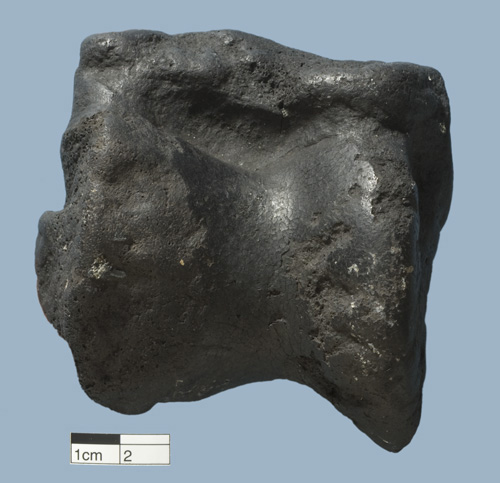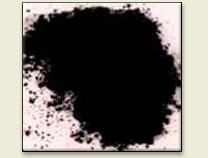How Bone black is made:
| Origin: animal | This charred bone has been identified as an astragalus, one of the ankle bones, of a fossil hippo. Department of Earth Sciences, University of Bristol. |
 |
|
| Natural variety of pigment | Charring of bones or waste ivory |
| Artificial variety of pigment | Bone black is prepared by charring bones, horns etc. in the absence of air. It is the deepest black but it was not used as widely as charcoal black. Fragments or turnings of ivory, or of the osseous parts of animals are put into a crucible surrounded by burning coals and covered. The ivory or bones, by exposure to the heat, were reduced to charcoal.
|
| 19th century recipe | Put into a crucible surrounded by burning coals, fragments or turnings of ivory, or of the osseous parts of animals, and cover it closely. The ivory or bones, by exposure to the heat, will be reduced to charcoal. When no more smoke is seen to pass through the joining of the cover, leave the crucible over the fire for half an hour or longer, or until it has completely cooled. There will then be found in it a hard carbonaceous matter, which, when pounded and ground on porphyry with water, is washed on a filter with warm water and then dried. Before it is used it must be again subjected to the matter. |
The ground pigment:
Pile of ground Bone black


